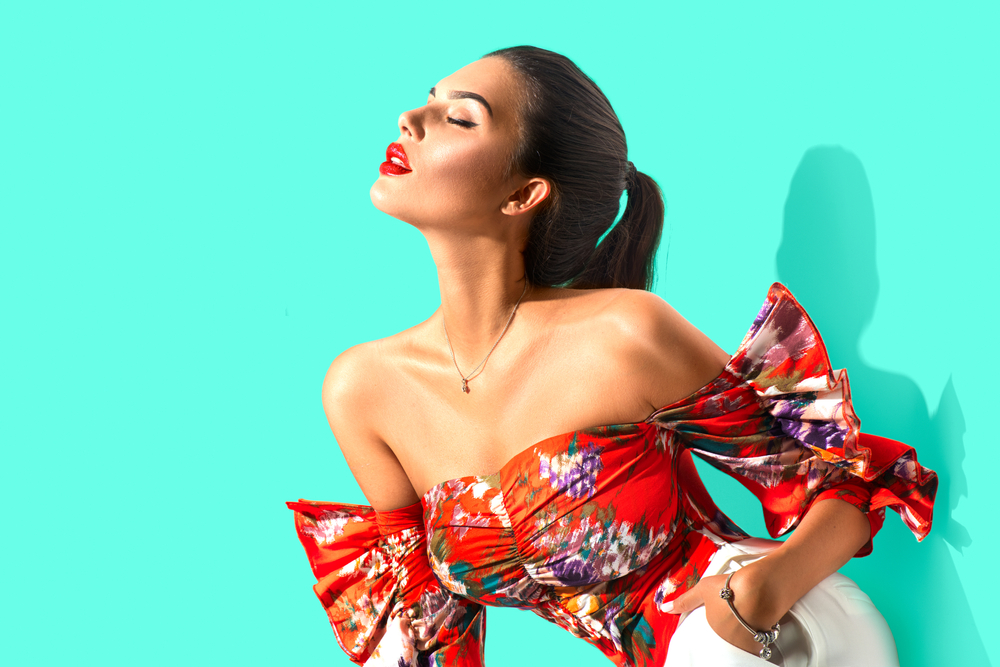
Unveiling the Art and Science of Modeling: Your Guide to the Fashion Industry's Inner World
Unveiling the Art and Science of Modeling: Your Guide to the Fashion Industry's Inner World
The world of modeling is often viewed as glamorous and mysterious. From walking the runway to gracing the covers of magazines, models are seen as symbols of beauty and allure. But behind the scenes, there is an intricate art and science that goes into creating the perfect image. In this article, we will explore the world of modelling and shed light on its inner workings.
[h2]The Evolution of Modeling[/h2]
Modeling has come a long way since its inception. What began as a form of representing fashion designs on paper has transformed into a multi-billion dollar industry. It has become a platform for self-expression, breaking stereotypes, and embracing diversity. Modeling has evolved to include various types such as runway, print, commercial, and even social media influencing.
[h2]The Art of Modeling[/h2]
Modeling is more than just standing in front of a camera or walking down a runway. It requires creativity, skill, and an ability to portray emotions. Models are artists who use their bodies as a canvas to bring fashion designs to life. They must embody a character or concept and convey it through their poses, expressions, and movement.
Models also play a crucial role in conveying the vision of fashion designers. They are the living mannequins who give shape and form to the clothes they wear. The art of modeling involves understanding the designer's vision and bringing it to life through their physicality.
[h2]The Science of Modeling[/h2]
While there is an artistry to modeling, there is also a scientific aspect to it. Models must maintain their physical appearance and take care of their bodies. This includes following a balanced diet, exercising regularly, and practicing good skincare habits. The science of modeling also includes understanding the technical aspects of lighting, angles, and photography to create visually stunning images.
Models must also possess business acumen. They need to market themselves, negotiate contracts, and manage their careers effectively. As the face of brands, they have to be adept at social media and personal branding. The scientific side of modeling requires models to be savvy entrepreneurs, constantly adapting to the ever-evolving fashion industry.
[h2]Challenges and Realities[/h2]
While modeling may seem glamorous from the outside, it is not without its challenges. The industry has faced criticism for promoting unrealistic beauty standards and lack of diversity. However, in recent years, there has been a push for more inclusivity, with models of all shapes, sizes, and backgrounds being celebrated.
Models also face the pressure of maintaining their appearance constantly. They may have to adhere to strict diets, endure long hours of fittings and shoots, and face rejection on a regular basis. It is essential for models to develop resilience and a strong sense of self-worth to overcome these challenges.
[h2]Tips for Aspiring Models[/h2]
If you dream of becoming a model, here are some tips to navigate the industry:
1. Build a Strong Portfolio: Invest in professional photoshoots to create an impressive portfolio that showcases your versatility and range.
2. Network: Attend fashion events, join modeling agencies, and connect with industry professionals to widen your network and increase your chances of getting noticed.
3. Take Care of Yourself: Maintain a healthy lifestyle, both physically and mentally. Stay active, eat well, and surround yourself with a positive support system.
4. Stay Persistent: Rejection is a part of the modeling world. Don't let it discourage you. Keep working on your skills, continue building your portfolio, and never give up on your dreams.
5. Educate Yourself: Stay updated with the latest trends and industry news. Know the market demand and adapt accordingly to maximize your chances of success.
[h2]Frequently Asked Questions[/h2]
1. What are the dimensions for a successful runway model?
- There is no set rule for runway model dimensions. However, most runway models are usually around 5'9" to 6'0" tall, with measurements of 34-24-34 inches.
2. How do models prepare for fashion week?
- Models prepare for fashion week by practicing their walks, attending fittings, and maintaining their physical appearance through skincare routines, healthy eating habits, and exercise.
3. How do models handle rejection?
- Rejection is common in the modeling industry. Models handle it by developing resilience, focusing on self-improvement, seeking constructive feedback, and remembering that success often comes after facing numerous rejections.
4. Can anyone become a model?
- While the industry is becoming more inclusive, not everyone can become a model. However, there are opportunities for a wide range of body types, ages, and ethnicities in various types of modeling.
5. Do models have control over the clothes they wear for photoshoots?
- In most cases, models do not have control over the clothes they wear for photoshoots. Fashion stylists and designers work together to curate the looks for each shoot or runway show. Models are expected to work with the team's vision and bring it to life through their poses and expressions.
In conclusion, modeling is an art and a science that requires creativity, dedication, and business acumen. Models are not just beautiful faces; they are skilled professionals who bring fashion designs to life while navigating the complexities of the industry. By understanding the various aspects of modeling, aspiring models can better prepare themselves for a career in this exciting and dynamic field.

Other useful resources
- https://en.wikipedia.org/wiki/Category:Modeling_agencies
- https://www.planetmodelphoto.com
- https://en.wikipedia.org/wiki/Category:Models_by_modeling_agency
- https://www.planetmodelphoto.com/models/modeling/usa/charlotte/nc-north-carolina